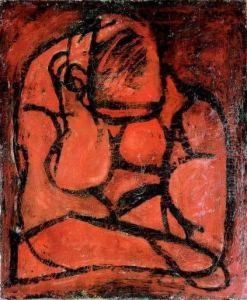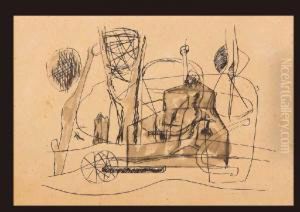Matsumoto Shunsuke Paintings
Matsumoto Shunsuke was a Japanese painter known for his unique style that blended Western modernism with traditional Japanese techniques. Born on February 1, 1912, in Shimane Prefecture, Japan, Shunsuke moved to Tokyo in the 1930s to pursue his artistic education. He enrolled at the Tokyo School of Fine Arts (now Tokyo University of the Arts), where he was exposed to a variety of artistic styles and movements, including yōga (Western-style painting) and nihonga (Japanese-style painting).
During his time at the art school, Matsumoto quickly developed his own style, which was characterized by a fusion of Japanese motifs with the aesthetics of modern Western art movements such as Surrealism and Cubism. His works often depicted fantastical landscapes, dream-like scenes, and were marked by a playful use of color and form. Shunsuke's paintings are noted for their poetic and somewhat enigmatic quality, which invites viewers into a surreal and introspective world.
The outbreak of World War II had a profound impact on Shunsuke's life and work. He was drafted into the Japanese military, which interrupted his artistic career. Despite the turmoil of the war, he continued to paint when possible, creating works that conveyed a sense of melancholy and reflection on the human condition.
Tragically, Matsumoto Shunsuke's life and burgeoning career were cut short when he died suddenly from an illness on December 5, 1948, at the age of 36. His early death meant that his body of work remained limited, but despite this, he left a lasting impact on the world of Japanese art. His innovative style and the fusion of Eastern and Western art traditions have continued to be celebrated and studied by art historians and enthusiasts. Shunsuke's works are held in several collections, including the National Museum of Modern Art, Tokyo, and they continue to be exhibited in galleries and museums around Japan.

